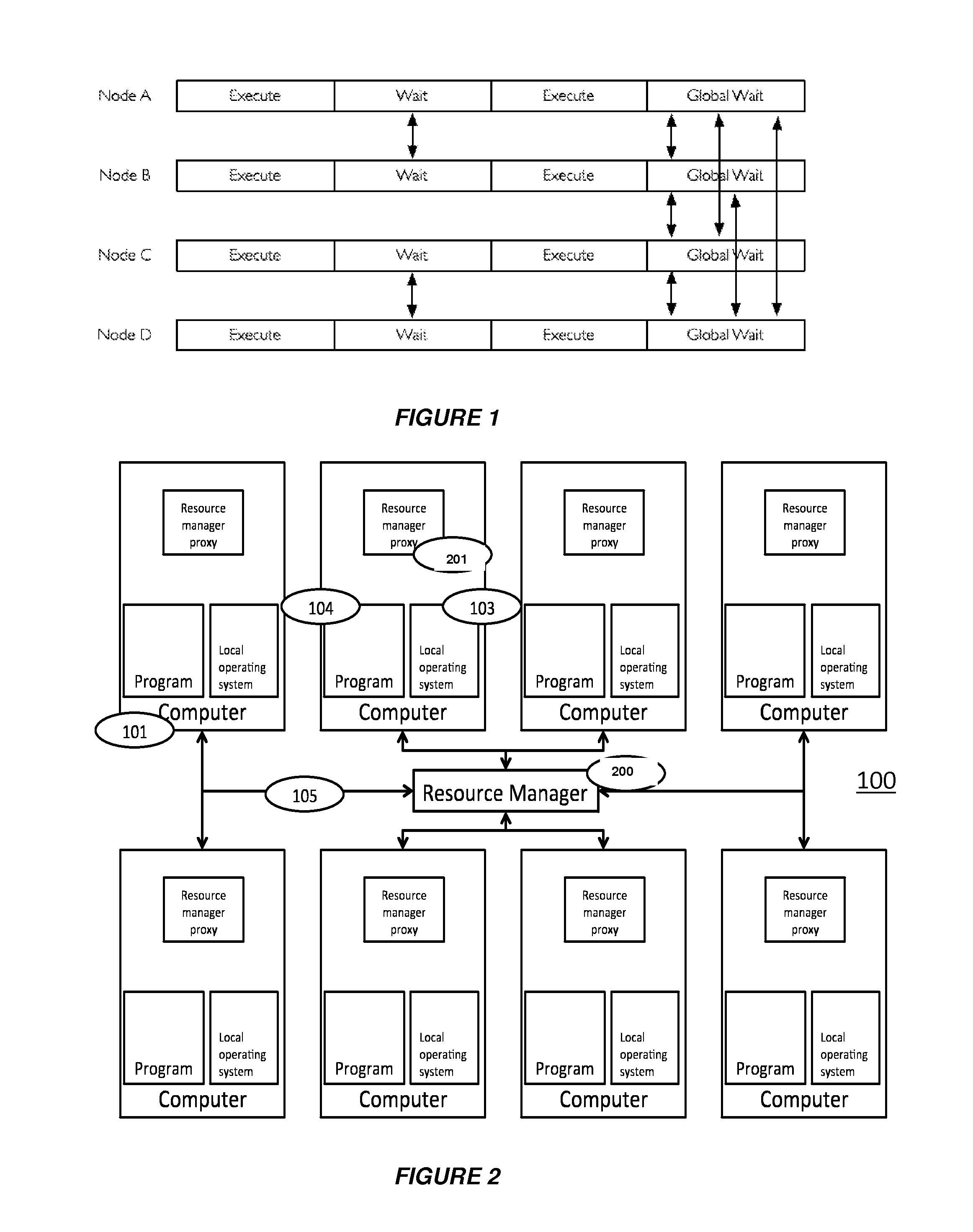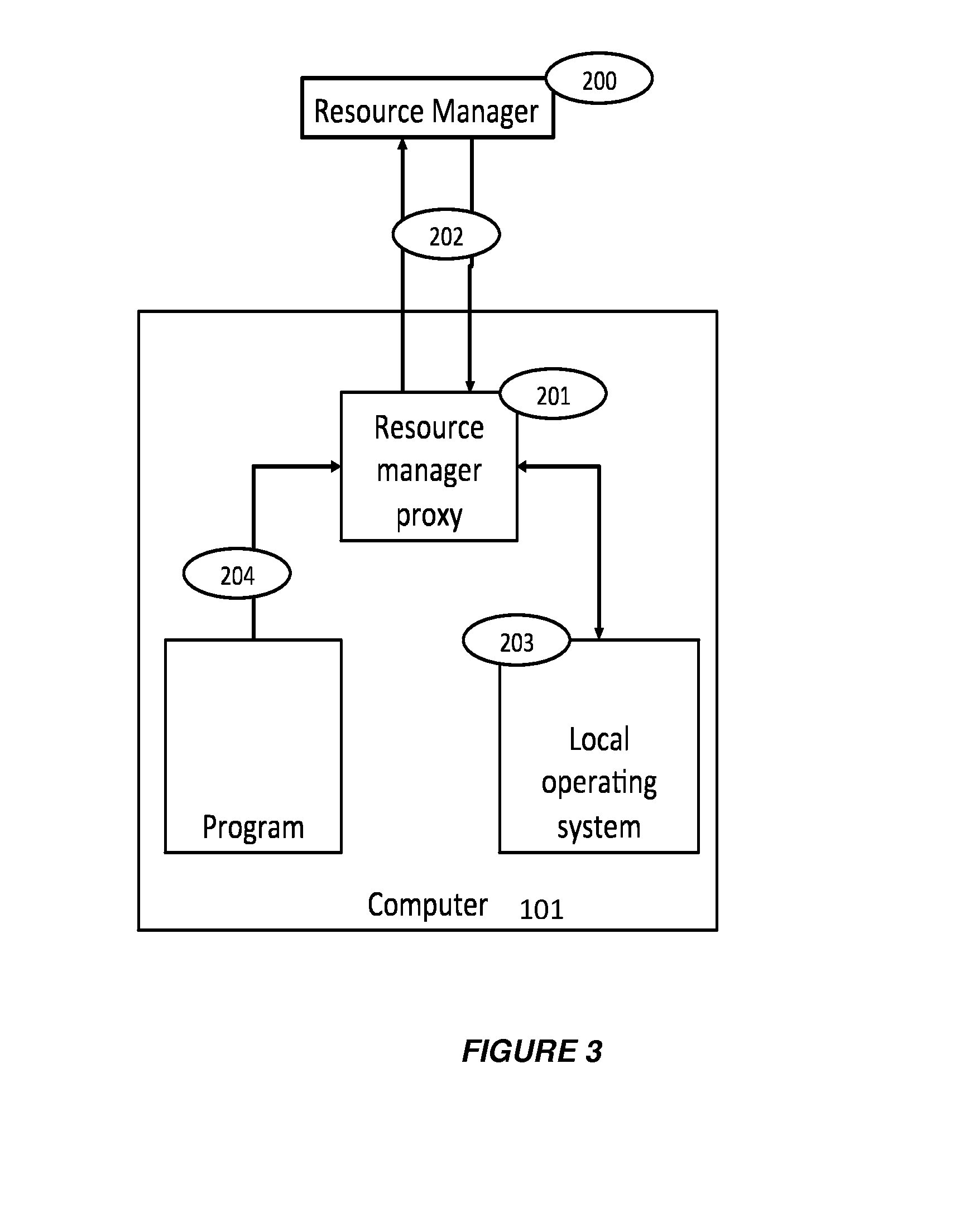Method of executing an application on a distributed computer system, a resource manager and a distributed computer system
a distributed computer system and resource manager technology, applied in multi-programming arrangements, liquid/fluent solid measurement, instruments, etc., can solve the problems of increasing energy use, increasing computational performance costs, and static resource use patterns over the whole set of computers, so as to reduce the amount of energy used, reduce the load on computational nodes, and save energy
- Summary
- Abstract
- Description
- Claims
- Application Information
AI Technical Summary
Benefits of technology
Problems solved by technology
Method used
Image
Examples
Embodiment Construction
[0070]Embodiments of the present invention will now be described with reference to FIGS. 2 to 9.
[0071]FIG. 2 shows a distributed computer system 100 in one embodiment of the invention. A Resource Manager 200 controls the power configuration of a large number of computers 101 in a HPC cluster 100. The computers 101 constitute computational nodes (or “compute nodes”) of an HPC program. Although FIG. 2 shows eight computers, high-end HPC clusters will run HPC programs that use resources from many thousands to hundreds of thousands of computers. Each of the computers is assumed to be operable in any one of a plurality of power configurations, including a highest-power, higher-performance configuration and one or more energy-saving, reduced performance modes.
[0072]Each computer runs three programs that are relevant to this invention; these programs are independent of each other. The programs are a Resource Manager Proxy 201, the local Operating System 103 and the local part of the HPC ap...
PUM
 Login to View More
Login to View More Abstract
Description
Claims
Application Information
 Login to View More
Login to View More - R&D
- Intellectual Property
- Life Sciences
- Materials
- Tech Scout
- Unparalleled Data Quality
- Higher Quality Content
- 60% Fewer Hallucinations
Browse by: Latest US Patents, China's latest patents, Technical Efficacy Thesaurus, Application Domain, Technology Topic, Popular Technical Reports.
© 2025 PatSnap. All rights reserved.Legal|Privacy policy|Modern Slavery Act Transparency Statement|Sitemap|About US| Contact US: help@patsnap.com



